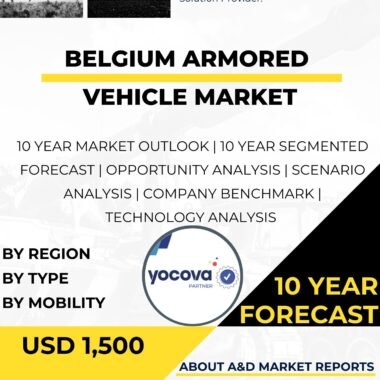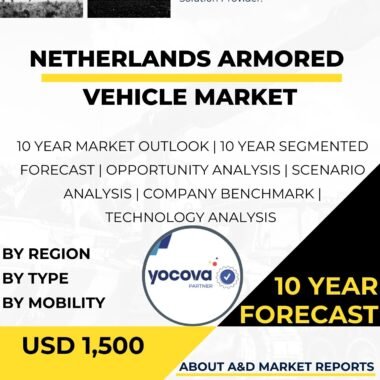Description
Malaysia Armored Vehicle Market has shown steady expansion as the country strengthens its defense posture amid a changing regional security environment. Armored vehicles remain a central element of Malaysia’s land force modernization strategy, providing protected mobility, firepower, and operational flexibility across diverse mission profiles.
As a strategically located Southeast Asian nation, Malaysia places strong emphasis on maintaining a capable and responsive armored fleet to safeguard territorial integrity and national interests. This focus has positioned armored vehicles as a long-term priority within national defense planning.
Malaysia Armored Vehicle Market Fleet Composition
The Malaysia Armored Vehicle Market is characterized by a broad mix of platforms, including main battle tanks, armored personnel carriers, infantry fighting vehicles, and mine-resistant ambush-protected vehicles. Each category supports specific operational requirements, ranging from conventional combat to internal security and peacekeeping roles.
This diversified fleet structure enables the Malaysian Armed Forces to respond effectively to varied threat scenarios while maintaining flexibility in deployment across urban, jungle, and border environments.
Malaysia Armored Vehicle Market Security Drivers
The Malaysia Armored Vehicle Market is strongly influenced by evolving regional security dynamics and military modernization trends among neighboring countries. To preserve deterrence credibility, Malaysia continues to invest in modern armored platforms equipped with improved protection, mobility, and combat systems.
These investments support defense readiness and ensure that ground forces remain capable of countering both traditional and asymmetric threats in increasingly complex operational settings.
Malaysia Armored Vehicle Market Industrial Development
The Malaysia Armored Vehicle Market also reflects the government’s emphasis on strengthening domestic defense manufacturing capabilities. Local production initiatives and technology transfer agreements have expanded Malaysia’s ability to assemble, customize, and support armored platforms domestically.
Collaboration between local defense firms and international manufacturers contributes to industrial growth, workforce development, and reduced reliance on foreign imports over the long term.
Malaysia Defense Procurement and Partnerships
Malaysia continues to complement domestic production with selective international procurement programs to enhance its armored vehicle inventory. Partnerships with established defense suppliers allow access to proven technologies while supporting knowledge transfer and system integration.
This balanced procurement approach helps Malaysia maintain a capable and modern fleet while managing risks associated with overdependence on a single supplier or platform.
Malaysia Military Operations and Civil Support
Armored vehicles in Malaysia are increasingly used beyond conventional combat roles, supporting peacekeeping, humanitarian assistance, and disaster response operations. Their protected mobility enables access to difficult terrain and enhances personnel safety during relief missions.
This dual-use role reinforces the value of armored vehicles as national assets that contribute to both security operations and civilian emergency support.
Malaysia Armored Capability Challenges and Outlook
Malaysia faces ongoing challenges related to budget allocation, lifecycle maintenance, and technological upgrades within its armored vehicle programs. Balancing modernization goals with cost efficiency remains a key consideration for defense planners.
Continued investment in training, system upgrades, and fleet sustainment will be essential to ensure that armored vehicles remain effective and adaptable to future operational demands, supporting Malaysia’s long-term defense readiness.




